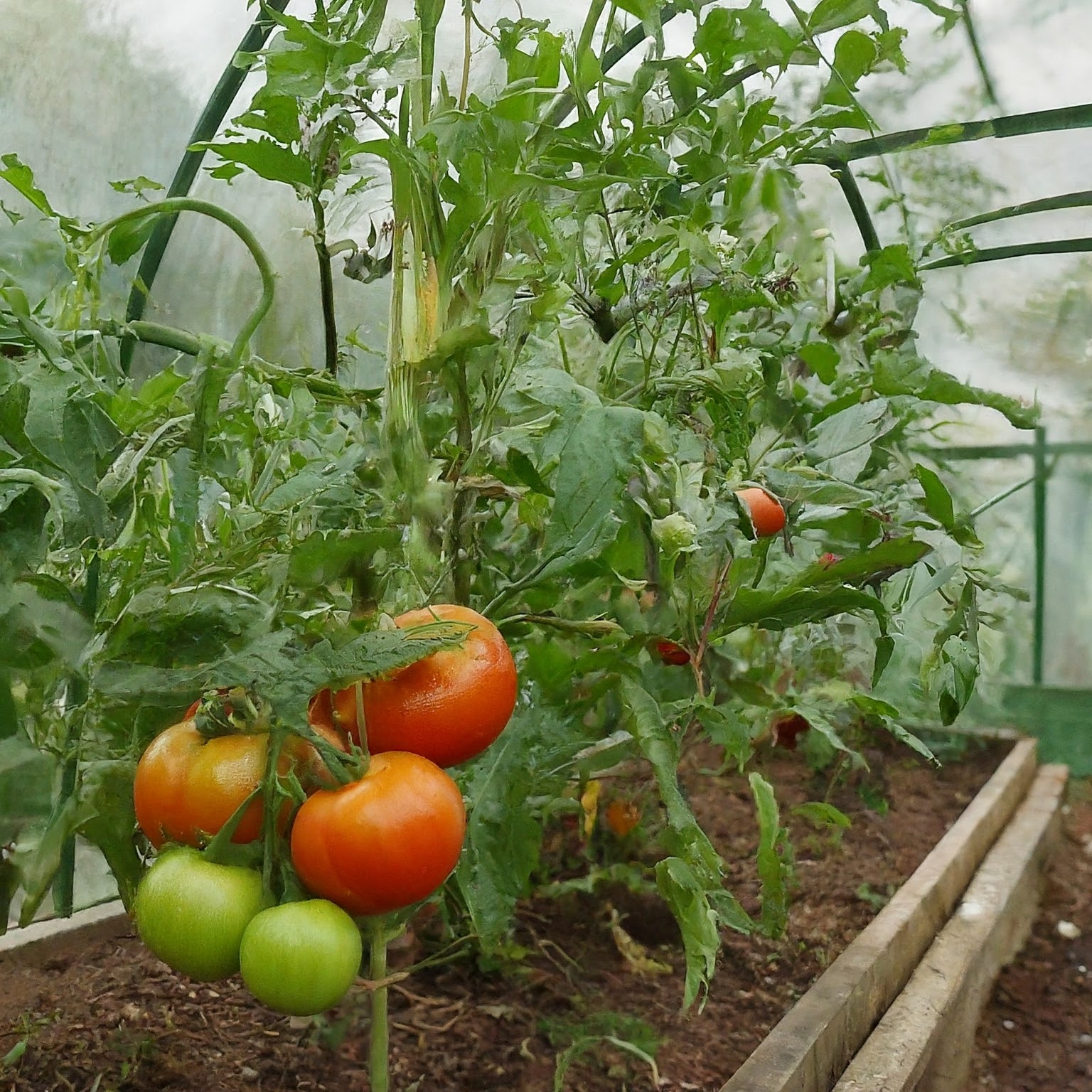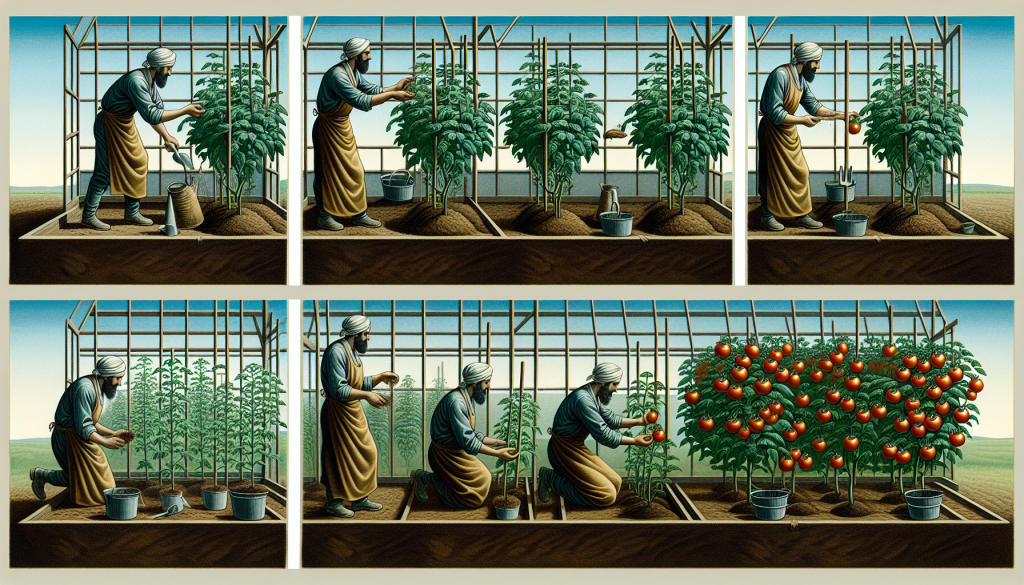All Posts
How to Plant Tomatoes in a Greenhouse
If you enjoy growing your own tomatoes like us, you may be wondering how to grow them in a greenhouse. Tomatoes are a popular greenhouse vegetables because they thrive in warm and protected environment which provided by home garden greenhouse.
To ensure a bountiful harvest of delicious tomatoes, it’s important to know how to properly care for tomato plants in a greenhouse. Maintaining proper greenhouse conditions involves providing good lighting, temperature control, and pollination, along with effective pest and disease management.
Choosing the Type of Tomato Plants for Your Greenhouse
Like other popular crops, tomatoes come in many different varieties. Each variety has unique characteristics such as taste, appearance, and storage qualities. With so many varieties to choose from, selecting which ones to grow in your greenhouse can be daunting, but that’s where we come in.
1.Indeterminate or Unstaking Tomatoes
Indeterminate tomato plants will grow extensively unless pruned or killed by frost. The fruits are set on branches that emerge from the central vine or stem, and these branches continue to appear as the plant grows. This results in an extended harvest period for tomatoes, with the plant always displaying fruits at different stages of growth. You can plant indeterminate tomato plants in raised beds, grow bags, or directly in the garden when the soil temperature reaches above 55°F. Due to their growth habit, you’ll need to support them with stakes or tomato cages. Indeterminate tomatoes are the most popular and are usually pruned to a single stem by removing suckers or side shoots.
2.Bush or Determinate Tomatoes
Unlike indeterminate varieties, determinate tomato plants will grow into fairly compact bushes with shorter stems. Thus, these are very suitable for growing in smaller greenhouses. Determinate tomato plants will stop growing vertically after a period of time, at which point they will continue to develop on lateral shoots. Their fruits often ripen all at once, making them great for processing. Determinate tomatoes are best planted in large pots, raised beds, or grow bags. Use containers that can hold at least five gallons of soil and provide adequate drainage. Mix new high-quality potting soil with organic matter. Determinate varieties don’t require as much support, but adding stakes is still beneficial. Container plants need regular watering. Do not prune the side shoots as these are fruiting spurs for tomatoes.
3.Semi-Determinate Tomatoes
As the name suggests, semi-determinate varieties exhibit some qualities of both determinate and indeterminate tomato plants. These varieties often grow indeterminately with shorter vines, making them more compact. However, some semi-determinate tomatoes will fruit like determinate plants, so it actually depends on the specific variety. Semi-determinate tomatoes can be planted in pots or raised beds and usually require minimal pruning to maintain. Some staking is usually helpful to keep the fruits off the ground.

How to Set Up Your Greenhouse for Tomatoes
Once you’ve chosen the tomatoes you want to grow and have purchased the seeds, it’s time to plant them and prepare your small greenhouse! The first step in setting up your greenhouse is to monitor the temperature. Tomatoes provide better yields when daytime temperatures are between 70-80°F and nighttime temperatures are between 60-65°F. You can improve the temperature inside the greenhouse by enhancing insulation and installing heaters until the weather warms up.
When you’re ready to plant garden greenhouse tomatoes, keep the following additional considerations in mind: Generally, tomatoes thrive in well-draining soil mixed with perlite, vermiculite, or peat moss. Mixing organic matter like compost into the soil before planting is a good idea as they are heavy feeders. We recommend using a drip irrigation system in the greenhouse when planting tomatoes. Drip irrigation not only delivers a steady water supply directly to the roots but can also be used for automatic fertilization. Most importantly, drip irrigation prevents the leaves and fruits of tomato plants from getting wet, which can lead to disease or fruit splitting. Keep humidity below 90% to prevent leaf mold. Proper ventilation is key to reducing humidity, especially in cold or damp conditions.
Caring for Your Greenhouse Tomato Plants
Tomatoes may be one of the most popular plants in the greenhouse, but they do require some care to ensure a bountiful harvest. Fortunately, most issues can be easily prevented and managed. How to Water Greenhouse Tomato Plants Correctly When growing tomatoes in a greenhouse, the best thing you can do to keep your plants healthy and prevent diseases is to water them regularly. Proper watering not only ensures a good harvest but also reduces the risk of drought stress or overwatering.
Avoid watering tomatoes from above and consider installing a drip irrigation system or simply watering at the base of the plants. Be sure to regularly check the soil’s moisture. If the top 2 inches of soil feel moist, wait another day or two before watering. On the other hand, if it’s dry, it’s time to water.
Pest and Disease Control for Greenhouse Tomato Cultivation
When growing tomatoes, it’s important to be aware of some common pests and diseases and take measures to prevent them First and foremost, take the following steps to prevent any major infestations or infections: Properly ventilate the greenhouse to prevent pests and diseases. Before planting another batch of tomatoes, replace old soil or practice crop rotation to prevent pest and root diseases. Keep the soil moist, but be careful not to overwater as wet soil can promote disease and mold. Avoid installing overhead irrigation systems as tomato plant leaves are susceptible to diseases when wet. Prune away dead or dying leaves to allow more sunlight and airflow.

